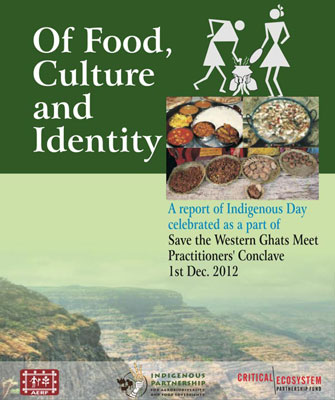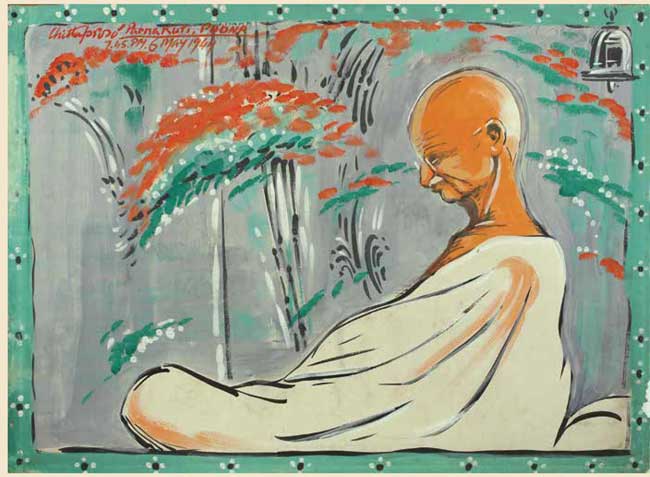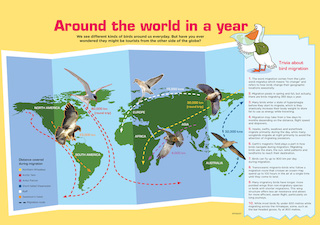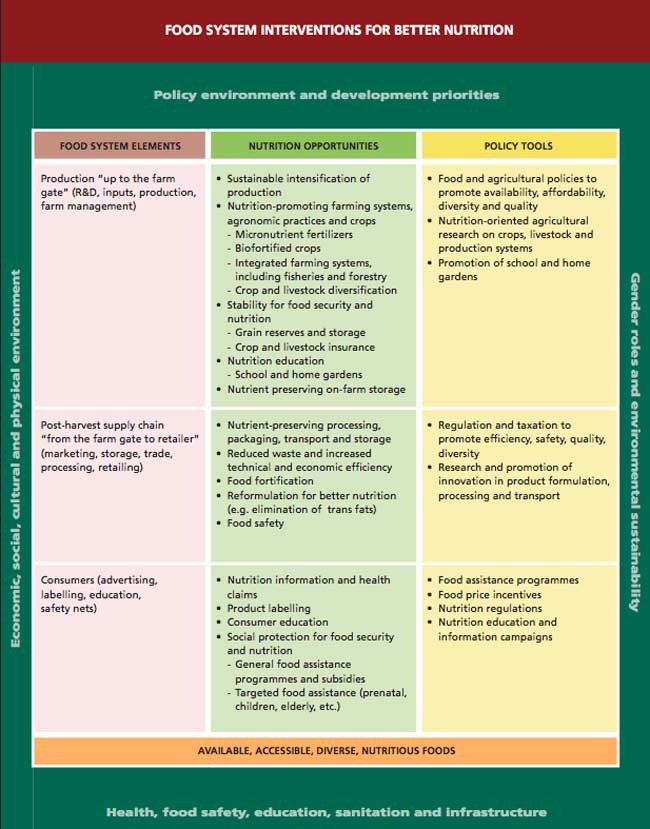Addressing malnutrition requires a multisectoral approach that includes complementary interventions in food systems, public health and education. This approach also facilitates the pursuit of multiple objectives, including better nutrition, gender equality and environmental sustainability. […]
Both traditional and modern supply chains offer risks and opportunities for achieving better nutrition and more sustainable food systems. Improvements in traditional supply chains can help reduce losses, lower prices and increase diversity of choice for lower-income households. The growth of modern retailing and food processing can facilitate the use of fortification to combat malnutrition, but the increased availability of highly-processed, packaged goods may contribute to overweight and obesity. […]
Malnutrition in all its forms – undernutrition, micronutrient deficiencies, and overweight and obesity – imposes unacceptably high economic and social costs on countries at all income levels. The State of Food and Agriculture 2013: Food systems for better nutrition argues that improving nutrition and reducing these costs must begin with food and agriculture. The traditional role of agriculture in producing food and generating income is fundamental, but agriculture and the entire food system – from inputs and production, through processing, storage, transport and retailing, to consumption – can contribute much more to the eradication of malnutrition. […]
Source: The State of Food and Agriculture 2013 – Executive Summary – i3301e.pdf
Address : http://www.fao.org/docrep/018/i3301e/i3301e.pdf
Date Visited: Tue Jun 11 2013 21:23:27 GMT+0200 (CEST)
“Hunger” and “undernutrition” amidst widening wealth disparity
In a discussion with Subhoranjan Dasgupta, Professor Patnaik, a distinguished economist from JNU, explores the widening wealth disparity and how a focus on GDP can be used to legitimise transfers to crony capitalists. […]
The MPI [Multidimensional Poverty Index]is a weighted index using criteria for a household to be considered non-poor, like access to piped water, non-thatched dwelling (which could be merely a one room hut with a metal roof), toilet; having a bank account (whether or not the balance is zero); it gives only one-sixth weight to what is misleadingly called a nutrition indicator, namely the body mass index (BMI), which does not actually measure nutritional status. Since it is a ratio (weight in kilograms divided by the square of height in metres), it can have exactly the same value for persons of normal weight and height, as for persons of the same age who are seriously undernourished and stunted. Even the latter, therefore, would not be considered poor. […]
The last half-century of colonial rule had seen an immense increase in nutritional poverty in British India, which was reversed, though not fully, by strenuous efforts of the post-independence governments prior to the introduction of neo-liberalism in the early 1990s. […] Even the National Family Health Survey, whose data are used by the MPI, shows that the prevalence of anaemia among women aged 15-49 rose from 53% in 2015-16 to 58% in 2019-21. Hunger and undernutrition are stalking the country. India today is worse placed than both Sub-Saharan Africa and the “Least Developed Countries”.
Source: ‘Hunger, Undernutrition Stalking India; Placed Worse Than Least Developed Nations’: Prabhat Patnaik by Subhoranjan Dasgupta, The Wire, 19 January 2024
URL: https://thewire.in/economy/hunger-undernutrition-stalking-india-placed-worse-than-least-developed-nations-prabhat-patnaik
Date Visited: 21 January 2024
The bloodletting approach to social and economic ills
Bloodletting was a common medical treatment for nearly 3,000 years. […]
Covid-19 has given us a brilliant, thorough autopsy of neoliberalism, indeed of capitalism itself. The corpse is on the table, in glaring light, every vein, artery, organ and bone staring us in the face. You can see all the leeches – privatisation, corporate globalism, extreme concentration of wealth, levels of inequality unseen in living memory. The bloodletting approach to social and economic ills that has seen societies drain working people of the basics of decent and dignified human existence. […]
Inequality, the ideologically insane argued, was not such a dreadful thing. It promoted competitiveness and individual initiative. And we needed more of those.
Inequality is now central to any debate we have on the future of humanity. The rulers know this. […]
The search is on for: how quickly can we overcome the problem and “return to normal.” But the problem was not about returning to normal.
The ‘normal’ was the problem. (The cagier of the ruling elites have been bandying about the phrase ‘the new normal’). […]
The ‘normal’ was an India where full-time farmers fell out of that status at the rate of 2,000 every 24 hours, for 20 years between 1991 and 2011. In other words, the population of full-time farmers in the country fell by 15 million in that period.
Also: 315,000 farmers took their own lives between 1995 and 2018, as the numbers (huge underestimates) of the National Crime Records Bureau show . Millions either became agricultural labourers or migrated out of their villages – since many allied occupations had also died – in search of jobs.
The new normal: tens of millions of migrants returning to their villages from the cities and towns following a prime minister giving a nation of 1.3 billion just four hours’ notice to total lockdown. Some have walked over a thousand kilometres, to reach their villages where they had correctly calculated their best chances of survival lay. They have trudged in temperatures in May of 43-47 degrees Celsius.
The new normal is the many millions marching back in search of those livelihoods that we destroyed these past three decades. […]
It was always normal that the words climate change were largely absent in public, or political, discourse. Though human agency-led climate change has long devastated Indian agriculture. […]
In agriculture, there’s a scary situation developing. Remember that millions of small and marginal farmers across the Third World shifted to cash crops over the past 3-4 decades, coaxed, coerced, goaded into doing so by typical Bank-Fund formulations: cash crops are exported, are paid for in hard currency – dollars come into your country and liberate you from poverty.
We know how well that went. Small cash crop farmers, especially those in cotton – are the largest single group among farmers’ suicides. A most highly indebted group, too. […]
Movements of farmers and farm labourers, for instance, are headed for serious trouble if they do not factor in the problems of climate change (which have already devastated agriculture in India); if they do not locate themselves in, and link their battles to, an agroecological approach. Labour movements need to not just fight for a bigger slice of the cake, but pursuer an older abnormal quest, for ownership of the bakery.
Some goals are clear: cancellation of Third World debt, for instance. In India, for ending the indebtedness of our own Fourth World.
Dismantle corporate monopolies. Start by evicting them entirely from Health, Food and Agriculture, and Education. […]
As the legendary freedom fighter Captain Bhau – who turned 97 this June – once told me. “We fought for Independence and Freedom. We achieved Independence.”
As we approach the 73rd anniversary of that Independence, it’s worth fighting for that unfinished agenda of freedom.
This article first appeared in Frontline magazine.
P Sainath is the founder and editor of the People’s Archive of Rural India. He has been a rural reporter for decades and is the author of ‘Everybody Loves a Good Drought.’ You can contact the author here: @PSainath_org
Source: “We Didn’t Bleed Him Enough”: When Normal is the Problem by P. Sainath, CounterPunch, 12 August 2020
URL: https://www.counterpunch.org/2020/08/12/we-didnt-bleed-him-enough-when-normal-is-the-problem/
Date Visited: 31 July 2022
“When a child is malnourished, and misses out on essential micronutrients in the first five years of life, the child will not have the intellectual or cognitive skills to be employable.” – Siddharth Chatterjee (United Nations Resident Coordinator for China) quoted by The Hindu >>
About the The Food and Agriculture Organization of the United Nations (FAO)
Achieving food security for all is at the heart of FAO’s efforts – to make sure people have regular access to enough high-quality food to lead active, healthy lives.
Our mandate is to improve nutrition, increase agricultural productivity, raise the standard of living in rural populations and contribute to global economic growth.
Source: Food and Agriculture Organization of the United Nations: About FAO
Address : http://www.fao.org/about/en/
Date Visited: Wed Jun 12 2013 21:06:58 GMT+0200 (CEST)

http://www.savethewesternghats.org/swg_group.php
Tribal nutrition | Read the full report including projects as part of UNICEF’s efforts to support the tribal population >>
Since independence, multiple government policies and programmes sought to develop tribal communities by focusing on their livelihood, education and health. Despite six decades of special treatment, even today, tribal peoples continue to be the most undernourished segment of the Indian society. […]
About 80 per cent of the 5 million chronically undernourished tribal children live in just eight states of Karnataka, Chhattisgarh, Gujarat, Jharkhand, Madhya Pradesh, Maharashtra, Rajasthan and Odisha. Tribal peoples in these states, which are covered by the Fifth Schedule of the Indian Constitution, and also other states have borne the maximum brunt of land alienation, displacement and poor compensation. […]
About 40 per cent of under five tribal children in India are stunted, and 16 per cent of them are severely stunted.
Tribal children have higher levels of undernutrition compared to children of socially economically advanced sections. Similarly, income security of tribal peoples has been adversely affected by losses and access to productive resources (rights to forest or agricultural lands coupled with poor compensation). Debts are one of the main coping strategies, resulting in a hand-to-mouth existence for those affected. […]
Source: Tribal nutrition: UNICEF’s efforts to support the tribal population, especially children who suffer from malnourishment.
URL: https://www.unicef.org/india/what-we-do/tribal-nutrition
Date visited: 28 July 2020
“If we are to halt the destruction of ecosystems, we need to understand how closely biodiversity and cultural diversity are intertwined. Perhaps it is time to reverse the gaze and begin to learn afresh from Adivasis.” – Felix Padel & Malvika Gupta in “Are mega residential schools wiping out India’s Adivasi culture?” (The Hindu, 13 February 2021) | More about the role of tribal communities in preserving India’s biodiversity and ethnobotany >>
The distinct characteristics of India’s agriculture require that a reformed state must ensure farmer, consumer welfare
For at least four decades now, economic policy making globally has dogmatically adhered to the notion that a progressively reduced role of the state would automatically deliver greater economic growth and welfare to the people. Since reform, by definition, is taken to mean only one thing, sector after sector is compulsively sought to be moved in this direction, even if overwhelming evidence, over many years from all over the world, indicates that it is the state that has played the leading role in provisioning the most critical aspects of life: water, sanitation, education, health, food and nutrition. […]
[I]n agriculture, members of the family can be drafted to work on the family’s farm, as also in other farm and non-farm work. This phenomenon is quite widespread in India today: of the nine crore [90 million] rural families who draw their main income from unskilled manual labour, four crore are small and marginal farmers. Through overwork and self-exploitation, peasant farmers are able to cling on to their land. […]
86% of India’s farmers are ‘small and marginal’, too poor to afford warehousing facilities and are, therefore, compelled to bring their harvest to the market at around the same time. […]
The moneylender combines the roles of input supplier, crop buyer, labour employer and land lessor. This interlocked grid works in tandem with the oppressive caste system, with the poorer, ‘lower’ caste farmers, facing a cumulative and cascading spiral of expropriation. All the above reasons provide a strong case for state intervention in multiple agricultural markets. […]
Ever since the Second Five Year Plan initiated in 1956, the central plank of Indian economic policy has been to get people off the land and move them into industry and urban areas. However, even after all these efforts, the United Nations estimates that in the year 2050, around 800 million people will continue to live in rural India. Given this unique Indian demographic transition, agriculture will need to be greatly strengthened, especially bearing in mind the complete nightmare our urban metropolises are, for current and future migrants. In a context characterised by grave and growing inequalities, as also a historically skewed balance of power, no reform can succeed that does not strengthen the weak and the excluded. […]
Source: “Plough to plate, hand held by the Indian state” by Mihir Shah, Distinguished Professor, Shiv Nadar University, (The Hindu, 9 April 2021)
URL: https://www.thehindu.com/opinion/lead/plough-to-plate-hand-held-by-the-indian-state/article34275034.ece
Date visited: 9 April 2021

Gandhian social movement | Constitution | Adverse inclusion >>
Recognizing the significance of traditional crop varieties, farmers have started to conserve and propagate local cultivars. […]
The tribal households traditionally had a backyard garden that had multiple, multilayered and multipurpose indigenous trees, plants, herbs, and shrubs,” Sanjay Patil of BAIF Development Research Foundation, an NGO that works with Adivasis in 16 states of India, told VillageSquare.in. “The produce from this small garden was sufficient to meet the dietary and nutrition needs of a family for an entire year. […]
Through seed exhibitions and personal interactions with growers, the BAIF team has collected data on the likely reasons behind the extinction of varieties, existing crop landraces and their specific properties, besides factors affecting crop diversity.
Data indicate that Dhadgaon in Nandurbar district and Jawhar have a number of landraces of food crops that are resistant to pests, grow on poor soils, flourish under changed climatic conditions and offer high nutritive value. […]
Source: “Adivasi farmers in Maharashtra are turning back to resilient indigenous crop varieties” by Hiren Kumar Bose (Scroll.in 31 August 2017)
URL: https://scroll.in/article/848760/adivasi-farmers-in-maharashtra-are-reviving-indigenous-crop-varieties-to-withstand-climate-change
Date visited: 2 October 2020

Human trafficking is a crime. To report in India, call Shakti Vahini
+91-11-42244224, +91-9582909025 or the national helpline Childline on 1098.
“As per a study on human trafficking, the state of Jharkhand has emerged as India’s trafficking hub with thousands of tribal women and girls being trafficked out of the state each year to Delhi, Punjab, Haryana and beyond [while] human traffickers are also involved in many cases of missing children.” – The Wire | Shakti Vahini | Tourism locations | Adivasi tribal bondage slavery trafficking (Safe search) >>
Editorial, The Hindu, June 13, 2013
India’s paradox of fast economic growth across several years and chronic malnutrition in a significant section of the population is well known. It has vast numbers of stunted children whose nutritional status is so poor that infectious diseases increase the danger of death. About 34 per cent of girls aged 15 to 19 are stunted in the country, according to a major review of global undernutrition by The Lancet. These adolescents, part of the post-liberalisation generation, have benefited the least from economic growth. Without active intervention to improve their access to appropriate food, the young women are bound to face complications during pregnancy and many are certain to deliver stunted babies, continuing the distressing cycle. What these insights underscore is the need for the political class to make the struggle against malnutrition a national priority. It is evident that in the absence of scaled-up programmes to build the health of the child and the teenager, and to provide opportunities for education and skill-building, India cannot really reap the so-called demographic dividend of a large young population. Neither can it substantially reduce its shameful levels of maternal and child mortality, attributable in good measure to lack of nutrients in the diet. […]These are communication challenges that the National Rural Health Mission must pursue vigorously. The broader task would be to improve universal access to nutrients through a basket of commodities — including pulses, fruits and vegetables — that can be supplied through a variety of channels. Clearly, the Public Distribution System and community-run not-for-profit institutions would form the backbone of such an effort. What is often forgotten in the discussion is the importance of early childhood nutrition — crucially, the first 1,000 days — for life-long health. […]
Regrettably, most politicians have failed to grasp the importance of this social investment. It is now for civil society to press the agenda.
Source: “Stunting a country” | The Hindu
Address : https://www.thehindu.com/opinion/editorial/stunting-a-country/article4807757.ece
Date Visited: 16 April 2021

Graphic © Outlook India 26 August 2019 | Enlarge >>
“The tribal food basket has always been diverse and nutritious” >>
“Health spending by the Indian government as percentage of GDP has long been one of the lowest for any major country, and the public health system is chronically dismal.” – Pranab Bardhan in “The two largest democracies in the world are the sickest now” | Learn more: Scroll.in, 24 August 2020 >>
Only a radical programme of institutional reform is likely to address their problems – state schools and hospitals which actually work, minimum wages, a measure of social security, accountability in the sphere of administration, land reform and land redistribution, community control of resources, an overhaul of the criminal justice system. Yet the Adivasi Ekta Parishad, a platform of Bhil organizations in western India, concentrates on questions of culture and identity, putting aside economic struggles as being of secondary importance. […]
[T]he adivasi and Dalit middle class speaks for a mass of poor whose material interests diverge from theirs insofar as they require a radical restructuring of the state’s institutions and its economic policies. The contradiction is inescapable unless one prefers to believe that every adivasi and Dalit can be lifted into the ranks of the middle class if social prejudice was abolished. An analogous contradiction marks the political choices of the dominant farming castes. Class differentiation has produced a semi-proletariat of small farmers and labourers, especially in regions of dryland cultivation, whose size can only be guessed at. Its economic position is sometimes as desperate as that of the rural under-class – witness the rising tide of farmers’ suicides over the last two decades – yet caste assertion undercuts class solidarity. […]
Caste is – and is not – class. It is class insofar as it determines class position for most Indians. It is not class insofar as it inhibits class mobilization across castes.
Source: “A party of the poor?” by Shashank Kela, india-seminar.com (Caste Matters, May 2012)
URL: https://www.india-seminar.com/2012/633.htm
Date Visited: 16 April 2021
Up-to-date reports by Indian experts and journalists
Search tips
Combine the name of any particular state, language or region with that of any tribal (Adivasi) community.
Add keywords of special interest (health, nutrition endangered language, illegal mining, sacred grove); learn about the rights of Scheduled Tribes such as the “Forest Rights Act” (FRA); and the United Nations “Declaration on the Rights of Indigenous Peoples”, “Universal Declaration of Human Rights”, “women’s rights”, or “children’s right to education”.
Specify any other issue or news item you want to learn more about (biodiversity, bonded labour and human trafficking, climate change, ecology, economic development, ethnobotany, ethnomedicine, global warming, Himalayan tribe, hunter-gatherers in a particular region or state, prevention of rural poverty, water access).
For official figures include “scheduled tribe ST” along with a union state or region: e.g. “Chhattisgarh ST community”, “Scheduled tribe Tamil Nadu census”, “ST Kerala census”, “Particularly Vulnerable Tribal Group Jharkhand”, “PVTG Rajasthan”, “Adivasi ST Kerala”, “Adibasi ST West Bengal” etc.
In case the Google Custom Search window is not displayed here try the following: (1) toggle between “Reader” and regular viewing; (2) in your browser’s Security settings select “Enable JavaScript” | More tips >>
List of websites covered by this Google custom search engine
Academia.edu (platform for academics to share research papers) – www.academia.edu
Archive.org – https://archive.org
Centre for Science and Environment – https://www.cseindia.org
Current Conservation – https://www.currentconservation.org
Development and Cooperation (D+C) https://www.dandc.eu
Down To Earth (India) – www.downtoearth.org.in
India Environment Portal – www.indiaenvironmentportal.org.in
Harnessing Nature Magazine – https://harnessingnature.online
Mongabay-India – https://india.mongabay.com
M S Swaminathan Research Foundation – www.mssrf.org
Navdanya (protecting India’s biodiversity based food heritage) – https://navdanya.org
Third World Network (Penang, Malaysia) – https://twn.my
The Shola Trust (nature conservation in the Nilgiri region) – www.thesholatrust.org
Research the above issues with the help of Shodhganga: A reservoir of theses from universities all over India, made available under Open Access >>
Note: hyperlinks and quotes are meant for fact-checking and information purposes only | Disclaimer >>
For additional learning resources visit the website of the Centre for Science and Environment (CSE), “a public interest research and advocacy organisation based in New Delhi”:
Communication for Awareness
CSE’s publications and informational products have been its strength and they have always combined research and readability to get the message across.

CSE’s tools for awareness raising are periodicals, publications, films/short spots, briefing papers, exhibitions, posters and other products. CSE’s informational products reach people in more diverse ways such as features service, website and e-news bulletins. […]
Source: About CSE
URL: https://www.cseindia.org
Date Visited: 10 July 2022
